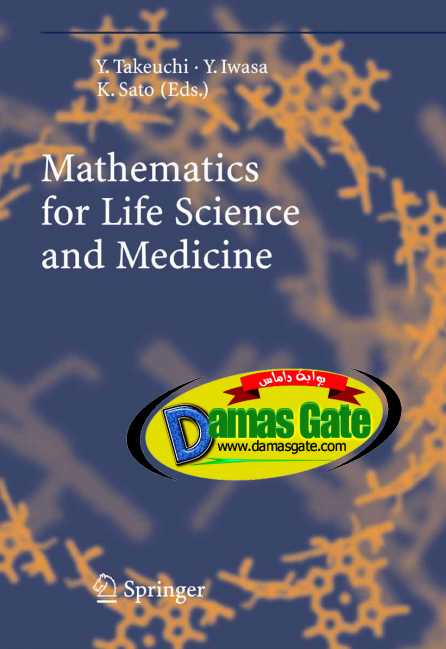Mathematics for Life Sciences and Medicine - Takeuchi Iwasa and Sato

Preface
Dynamical systems theory in mathematical biology and environmental science
has attracted much attention from many scientific fields as well as mathematics.
For example, “chaos” is one of its typical topics. Recently the preservation
of endangered species has become one of the most important issues
in biology and environmental science, because of the recent rapid loss of biodiversity
in the world. In this respect, permanence and persistence, the new
concepts in dynamical systems theory, are important. These give a new aspect
in mathematics that includes various nonlinear phenomena such as chaos and
phase transition, as well as the traditional concepts of stability and oscillation.
Permanence and persistence analyses are expected not only to develop
as new fields in mathematics but also to provide useful measures of robust
survival for biological species in conservation biology and ecosystem management.
Thus the study of dynamical systems will hopefully lead us to a useful
policy for bio-diversity problems and the conservation of endangered species.
This brings us to recognize the importance of collaborations among mathematicians,
biologists, environmental scientists and many related scientists
as well. Mathematicians should establish a mathematical basis describing
the various problems that appear in the dynamical systems of biology, and
feed back their work to biology and environmental sciences. Biologists and
environmental scientists should clarify/build the model systems that are important
in their own as global biological and environmental problems. In the
end mathematics, biology and environmental sciences develop together.
The International Symposium “Dynamical Systems Theory and Its Applications
to Biology and Environmental Sciences”, held at Hamamatsu, Japan,
March 14th-17th, 2004, under the chairmanship of one of the editors (Y.T.),
gave the editors the idea for the book Mathematics for Life Science and
Medicine and the chapters include material presented at the symposium as
invited lectures.
Download
*

Preface
Dynamical systems theory in mathematical biology and environmental science
has attracted much attention from many scientific fields as well as mathematics.
For example, “chaos” is one of its typical topics. Recently the preservation
of endangered species has become one of the most important issues
in biology and environmental science, because of the recent rapid loss of biodiversity
in the world. In this respect, permanence and persistence, the new
concepts in dynamical systems theory, are important. These give a new aspect
in mathematics that includes various nonlinear phenomena such as chaos and
phase transition, as well as the traditional concepts of stability and oscillation.
Permanence and persistence analyses are expected not only to develop
as new fields in mathematics but also to provide useful measures of robust
survival for biological species in conservation biology and ecosystem management.
Thus the study of dynamical systems will hopefully lead us to a useful
policy for bio-diversity problems and the conservation of endangered species.
This brings us to recognize the importance of collaborations among mathematicians,
biologists, environmental scientists and many related scientists
as well. Mathematicians should establish a mathematical basis describing
the various problems that appear in the dynamical systems of biology, and
feed back their work to biology and environmental sciences. Biologists and
environmental scientists should clarify/build the model systems that are important
in their own as global biological and environmental problems. In the
end mathematics, biology and environmental sciences develop together.
The International Symposium “Dynamical Systems Theory and Its Applications
to Biology and Environmental Sciences”, held at Hamamatsu, Japan,
March 14th-17th, 2004, under the chairmanship of one of the editors (Y.T.),
gave the editors the idea for the book Mathematics for Life Science and
Medicine and the chapters include material presented at the symposium as
invited lectures.
Download
*